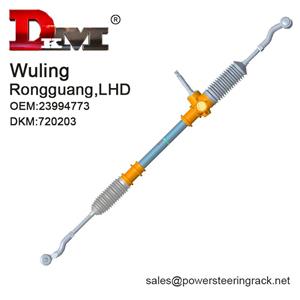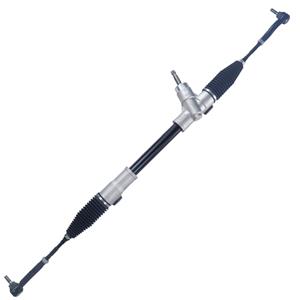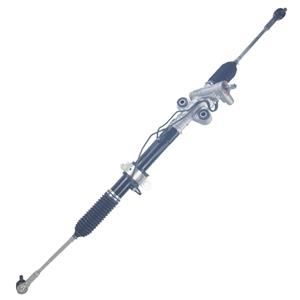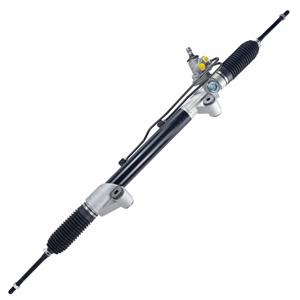How to determine if a hydraulic power steering rack needs steering fluid?
Hydraulic power steering is a common assisted steering technology in modern vehicles. It uses a hydraulic pump and hydraulic fluid to provide power, helping the driver turn the steering wheel more easily.
A hydraulic power steering system typically consists of a hydraulic pump, power steering rack, oil pipes, and a fuel tank. Hydraulic oil plays a crucial role in this system. Steering fluid, commonly referred to as hydraulic oil, is the core fluid in a hydraulic power steering system, responsible for transmitting pressure within the system and driving the steering system.
Therefore, timely inspection and top-up of steering fluid to ensure the proper functioning of the hydraulic system is an essential part of vehicle maintenance.
This article will discuss in detail how to determine if a hydraulic power steering rack needs to be topped up with steering fluid and provide practical steps to ensure optimal performance of the hydraulic power steering system.
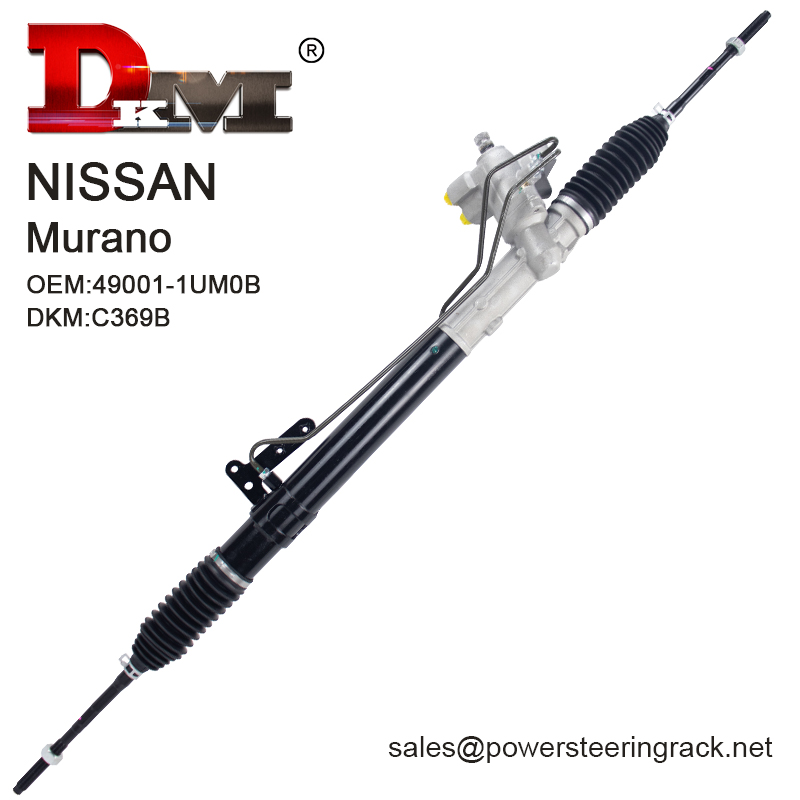
How does a hydraulic power steering system work?
A hydraulic power steering system uses hydraulic oil to circulate in a closed system. A hydraulic pump delivers the fluid to the power steering rack, generating power steering. Specifically, the hydraulic power steering system uses the steering pump to deliver hydraulic oil through oil pipes to the steering rack. The hydraulic fluid flowing through the steering rack generates power, which in turn assists in turning the wheels through the transmission mechanism.
The main components of a hydraulic power steering system include:
· Hydraulic pump: Driven by the engine, it provides hydraulic pressure to the steering system.
· Power steering rack: Converts hydraulic pressure into mechanical force, helping the driver turn the steering wheel.
· Hydraulic oil: Serving as the power transmission medium, hydraulic oil circulates throughout the system to maintain proper operation.
· Oil tank and oil pipes: Hydraulic oil is delivered to various components through the tank and oil pipes, completing power transmission.
The operation of a hydraulic power steering system depends on sufficient and smooth hydraulic fluid flow. Insufficient hydraulic fluid or problems with the hydraulic fluid can affect the power steering rack, causing heavy steering or even complete failure. Therefore, timely checking the hydraulic fluid level and quality is crucial to ensure the proper functioning of the steering system.

How to determine whether the hydraulic power steering rack needs steering fluid?
Five signs that your hydraulic power steering rack needs to be topped up:
1. Heavy steering wheel
2. Unusual steering wheel noises
3. Steering becomes jerky
4. Hydraulic oil warning light illuminates
5. Check the hydraulic oil tank fluid level
1. Heavy steering wheel
When the hydraulic oil level is low, the power assist function of the hydraulic power steering rack will be affected. The driver will feel the steering wheel becomes heavy and more difficult to turn than usual. This is because insufficient hydraulic oil causes the hydraulic pump to malfunction, resulting in insufficient power assist, which increases the driver's workload.
2. Unusual steering wheel noises
If the hydraulic oil level is low or contaminated, the steering wheel may make a squeaking noise when turning. This noise is usually a sign of a malfunctioning hydraulic pump, restricted fluid flow, or air in the system. When the hydraulic oil level is low, air in the pump can enter the hydraulic system, causing bubbles to form and producing noise.
3. Jerky steering
Insufficient hydraulic oil can cause jerky steering. Drivers may notice that the steering wheel turns unevenly, with resistance or a sticking sensation. This usually indicates a restriction in the flow of hydraulic fluid within the system, resulting in jerky movement of the hydraulic power steering rack.
4. Hydraulic Fluid Warning Light Illuminates
Many modern vehicles are equipped with a hydraulic fluid level warning light. When the hydraulic fluid level is low, the hydraulic fluid warning light on the instrument panel illuminates, reminding the owner to check the hydraulic fluid level. This is a warning provided by the vehicle's electronic monitoring system.
5. Checking the Hydraulic Fluid Tank Level
The most direct way to check the fluid level is to check the hydraulic fluid tank. The hydraulic fluid tank is typically located in the engine compartment. The owner can check the hydraulic fluid level through a transparent window on the outside of the tank or by using the dipstick. If the fluid level is below the minimum mark, the steering fluid needs to be added.
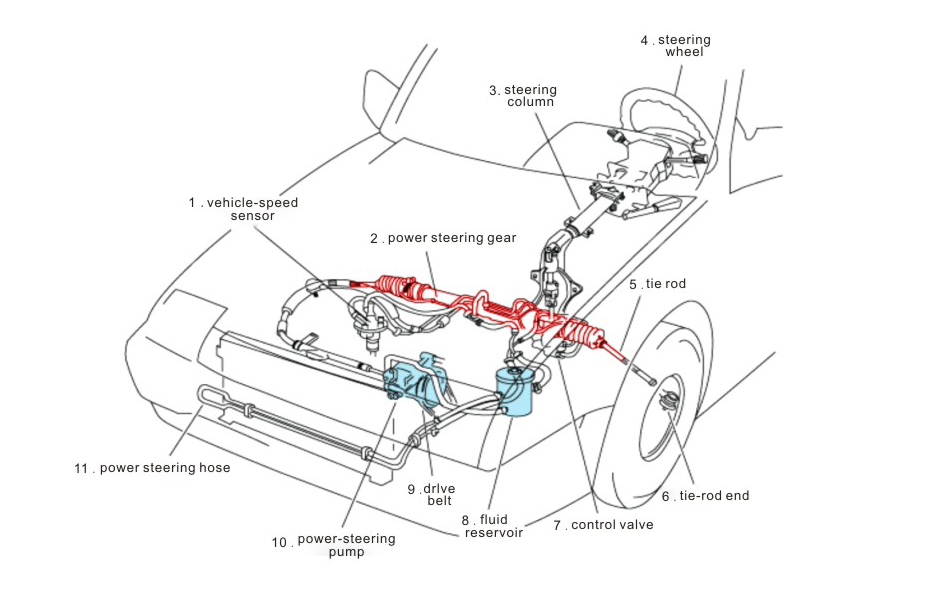
How to Check the Fluid Level in the Hydraulic Power Steering System?
Checking the fluid level in the hydraulic power steering system is the most direct way to determine if the steering fluid needs to be added. The following are the specific inspection steps:
1. Prepare Tools
When checking the hydraulic fluid level, you'll need a clean cloth or paper towel to clean the dipstick and check the fluid level.
2. Locate the Hydraulic Fluid Tank
The hydraulic fluid tank is usually located in a conspicuous location inside the engine compartment. Your vehicle's owner's manual will provide the exact location of the hydraulic fluid tank, so you can refer to it to find it.
3. Check the Dipstick
If your vehicle is equipped with a dipstick, you can simply remove it, wipe it clean, and then insert it back into the tank. Then, remove the dipstick and check the fluid level. If the level is below the mark, the hydraulic fluid is low.
4. Check Through the Hydraulic Fluid Window
Some vehicles have a transparent window in the hydraulic fluid tank, allowing you to visually check whether the fluid level is within the normal range. If the level is below the minimum mark, you need to add hydraulic fluid.
5. Check the Fluid Quality
In addition to checking the hydraulic fluid level, you should also regularly check the quality of the hydraulic fluid. If the fluid is discolored or has sediment, it indicates that the hydraulic fluid is aged or contaminated and needs to be replaced.

How do I add hydraulic power steering fluid?
When the hydraulic fluid level is low, you need to add it immediately. Here are the steps for adding hydraulic fluid:
1. Select the appropriate hydraulic fluid
First, select the hydraulic fluid appropriate for your vehicle. Your vehicle's owner's manual typically lists the recommended hydraulic fluid type and viscosity grade. Different vehicles require different types of hydraulic fluid, and using an inappropriate fluid may damage the hydraulic power steering rack.
2. Check the fuel tank cap
The hydraulic fluid tank typically has a fuel tank cap, which you need to remove first. Some vehicles may require a wrench to open the cap.
3. Add hydraulic fluid
Use a funnel to slowly add hydraulic fluid to the tank, being careful not to exceed the maximum level mark. While adding, monitor the fluid level to ensure it remains within the recommended range.
4. Recheck the fluid level
After adding the hydraulic fluid, recheck the fluid level to ensure it is within the recommended level. If the level is correct, re-tighten the fuel tank cap.
5. Check if the steering system has returned to normal operation
After adding the hydraulic fluid, the owner should start the engine and rotate the steering wheel several times to check if the hydraulic power steering rack has returned to normal operation. At this point, steering should become easier and the steering operation smoother.
Are you an OEM or aftermarket manufacturer?
DKM is both! Since 1996, we’ve produced original-equipment-quality steering racks for major domestic OEMs and also operate as an aftermarket supplier. With a modern factory, full production lines, and efficient processes, we're equipped to manage OEM projects and support distributors seeking wholesale, low-price parts. Clients can buy from us directly at factory prices, benefiting from our reputation as a quality China-based manufacturer.

